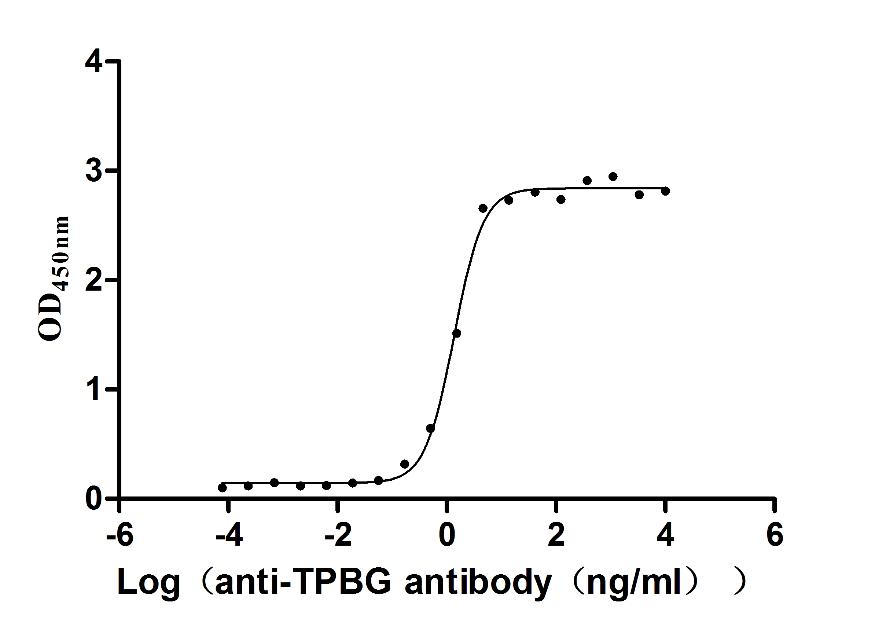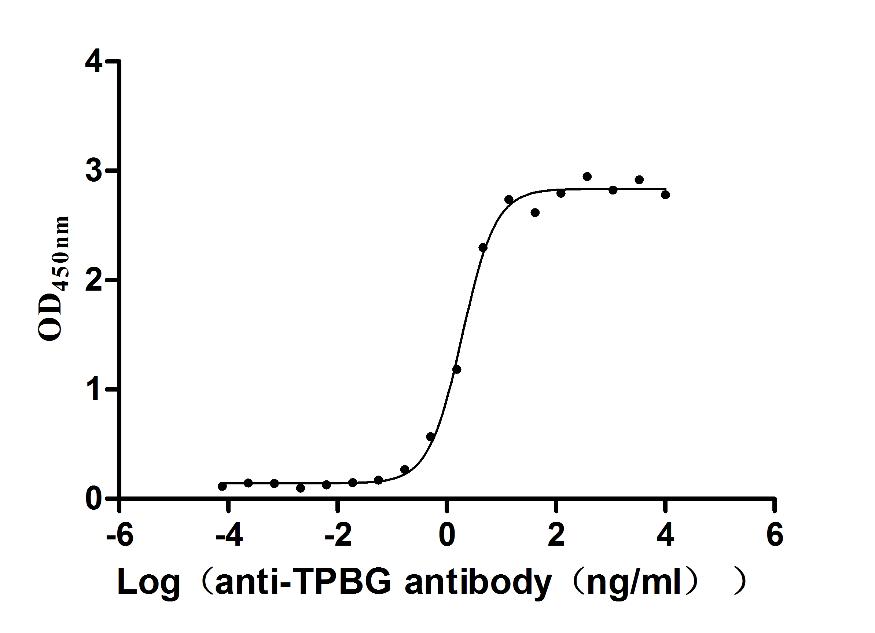Alternative Names
Trophoblast glycoprotein; 5T4 oncofetal antigen; 5T4 oncofetal trophoblast glycoprotein; T4 oncotrophoblast glycoprotein; M6P1; Wnt-activated inhibitory factor 1; WAIF1; TPBG; 5T4
Species Reactivity
Human, Macaca mulatta
Immunogen
Recombinant Human TPBG protein
Immunogen Species
Homo sapiens (Human)
Purification Method
Affinity-chromatography
Concentration
It differs from different batches. Please contact us to confirm it.
Buffer
Preservative: 0.03% Proclin 300
Constituents: 50% Glycerol, 0.01M PBS, PH 7.4
Tested Applications
ELISA
Storage
Upon receipt, store at -20°C or -80°C. Avoid repeated freeze.
Lead Time
Basically, we can dispatch the products out in 1-3 working days after receiving your orders. Delivery time maybe differs from different purchasing way or location, please kindly consult your local distributors for specific delivery time.
Description
CUSABIO produced the TPBG recombinant monoclonal antibody through a series of steps. Firstly, B cells were obtained from the spleen of the immunized animal, where the recombinant human TPBG protein served as the immunogen during the immunization process. RNA was then isolated from the B cells and converted into cDNA through reverse transcription. Using the cDNA as a template, the gene encoding the TPBG antibody was extended with a degenerate primer and then inserted into a recombinant vector. The vector was introduced into host cells via transfection to enable antibody expression. The TPBG recombinant monoclonal antibody was harvested from the cell culture supernatant and purified using affinity chromatography. To validate the antibody, it underwent testing for reactivity with human and macaca mulatta TPBG proteins in ELISA, confirming its specificity and functionality.
Usage
For Research Use Only. Not for use in diagnostic or therapeutic procedures.






